Abstract
The progressive ratio schedule requires the subject to emit an increasing number of responses for each successive reinforcement. Eventually, the response requirement becomes so large that the subject fails to respond for a period of 15 min and thereby terminates the session. This point is arbitrarily defined as the “breaking point” of the subject's performance. The measure is quantified in terms of the number of responses in the final completed (i.e., reinforced) ratio run of the session. Previous work has shown that this measure varies as a function of several motivational variables and may thus be useful as an index of reinforcement strength. The present study is an extension of that work. The subjects were four rats. In the first experiment, the effects of the size of the increment by which each ratio run increased were studied. In two additional experiments, the volume of a liquid reinforcer was varied using both large and small ratio increments. The results indicate that the number of responses in the final completed ratio run increases as a function of the size of the ratio increment. However, the number of reinforcements obtained by the animals per session declines sharply. When large ratio increments are used, the number of responses in the final ratio increases as a function of the volume of the reinforcer, but when small increments are used, progressive satiation results in a decline in performance with the larger volumes of liquid.
Full text
PDF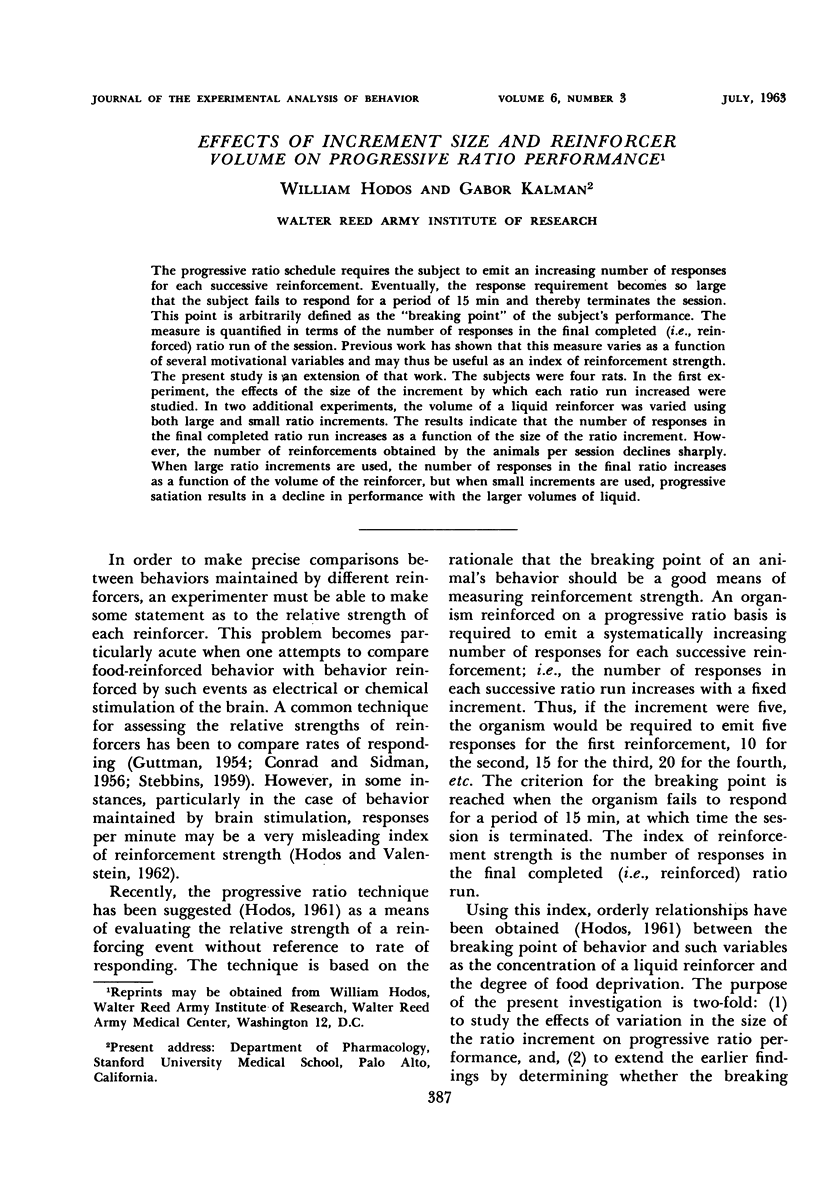

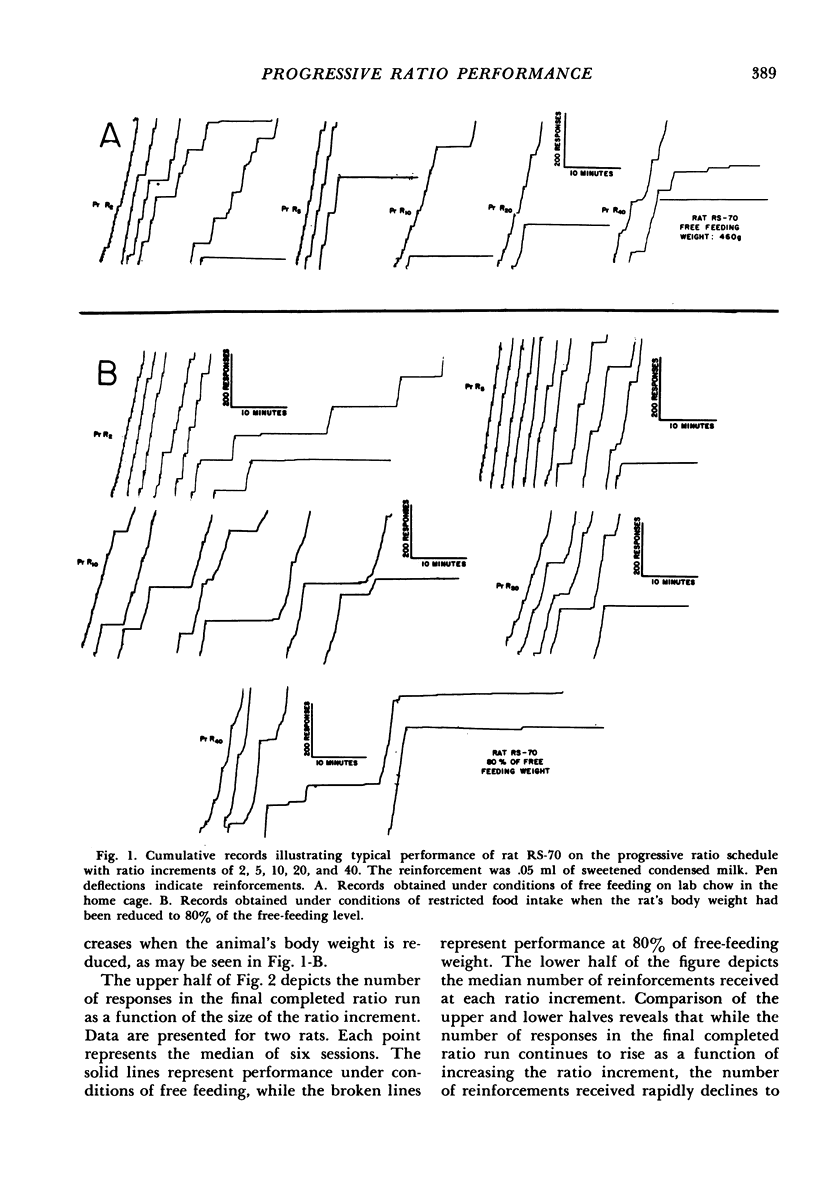
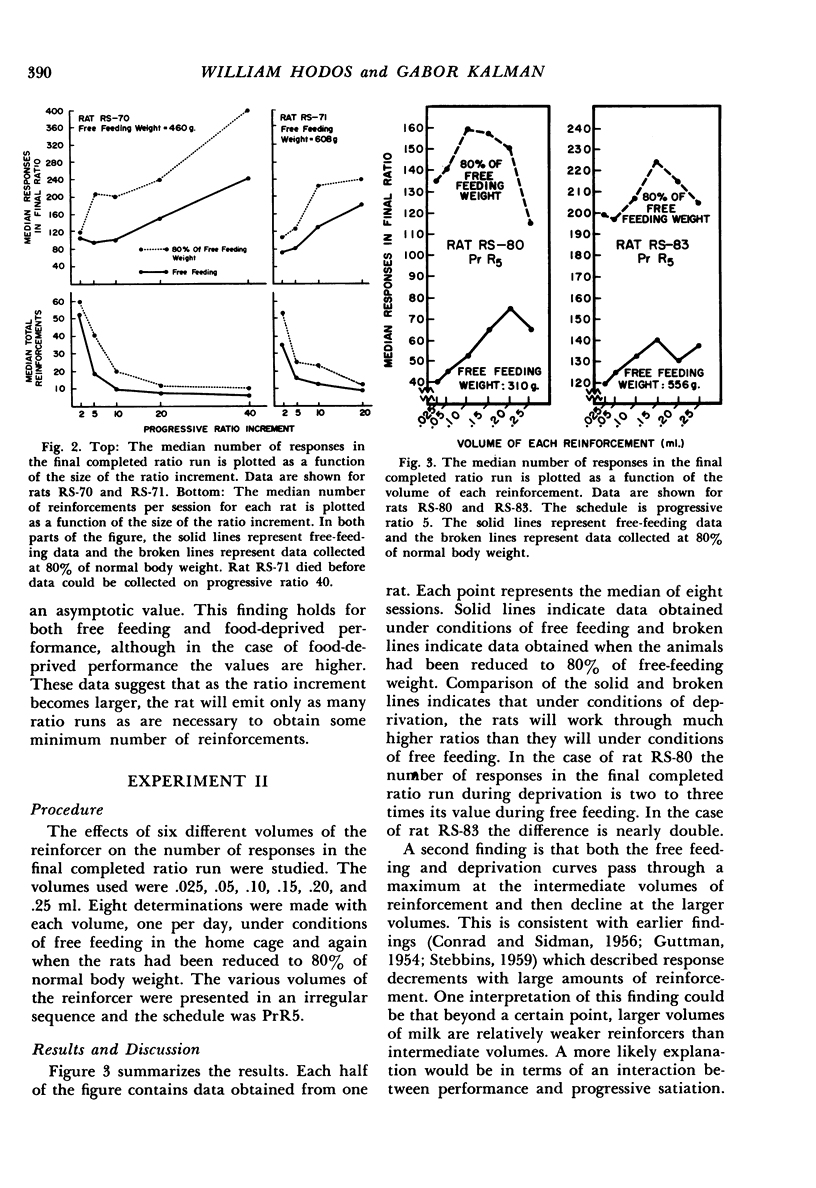
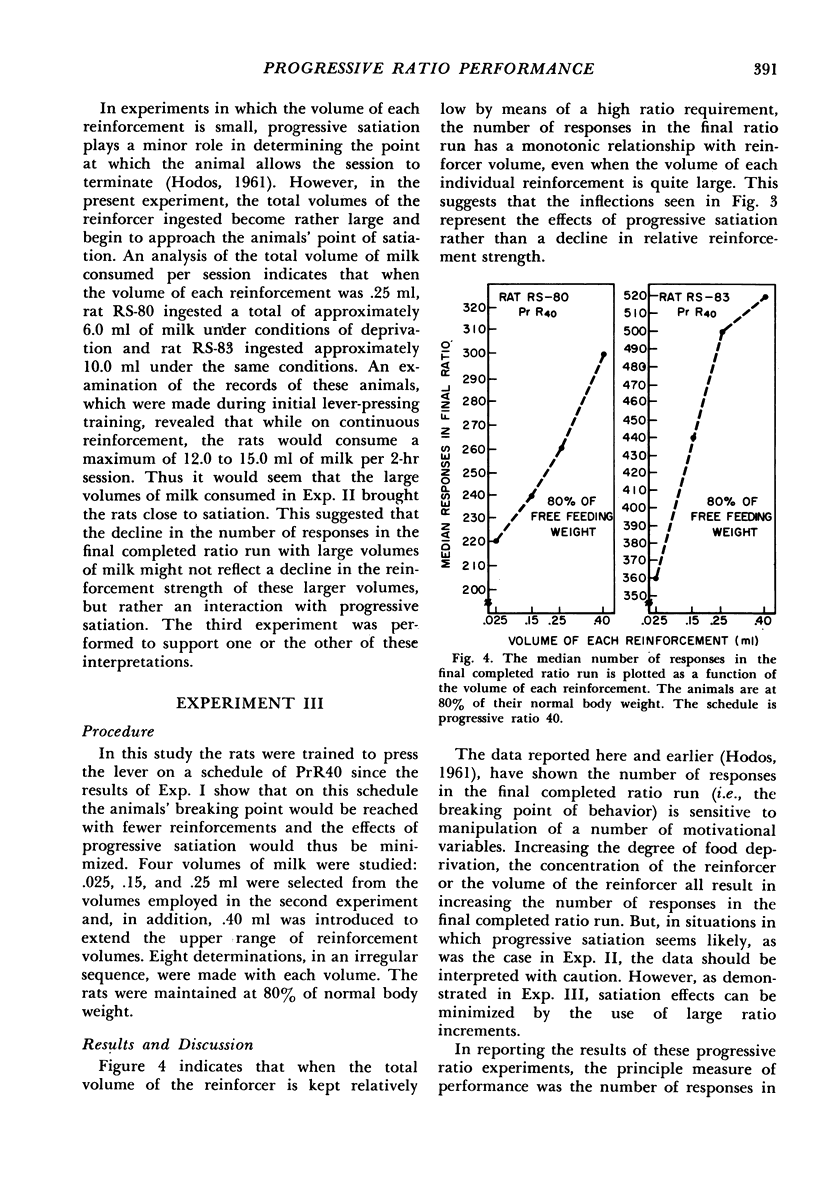
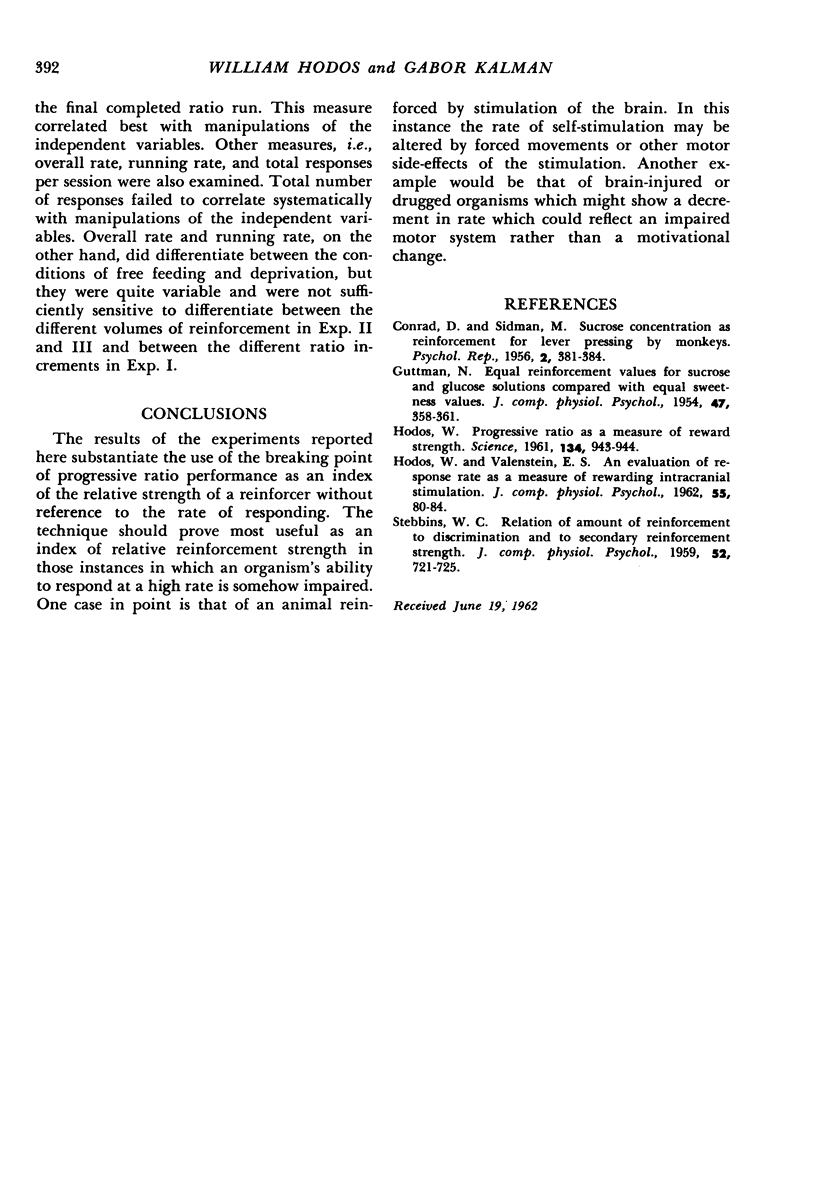
Selected References
These references are in PubMed. This may not be the complete list of references from this article.
- GUTTMAN N. Equal-reinforcement values for sucrose and glucose solutions compared with equal-sweetness values. J Comp Physiol Psychol. 1954 Oct;47(5):358–361. doi: 10.1037/h0062710. [DOI] [PubMed] [Google Scholar]
- HODOS W. Progressive ratio as a measure of reward strength. Science. 1961 Sep 29;134(3483):943–944. doi: 10.1126/science.134.3483.943. [DOI] [PubMed] [Google Scholar]
- HODOS W., VALENSTEIN E. S. An evaluation of response rate as a measure of rewarding intracranial stimulation. J Comp Physiol Psychol. 1962 Feb;55:80–84. doi: 10.1037/h0047681. [DOI] [PubMed] [Google Scholar]
- STEBBINS W. C. Relation of amount of primary reinforcement to discrimination and to secondary reinforcement strength. J Comp Physiol Psychol. 1959 Dec;52:721–726. doi: 10.1037/h0039355. [DOI] [PubMed] [Google Scholar]


